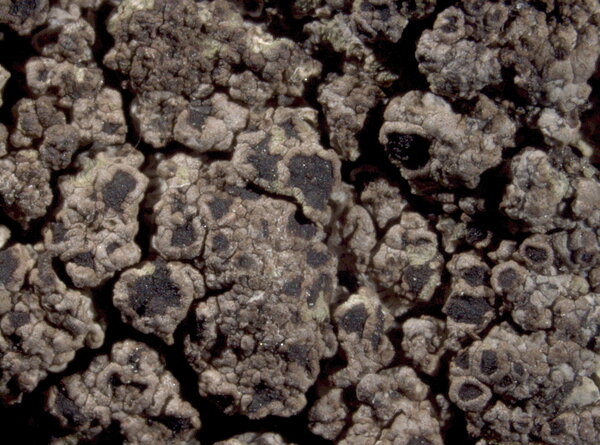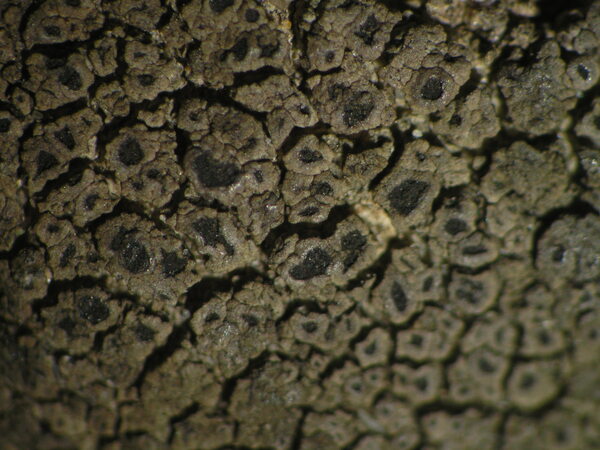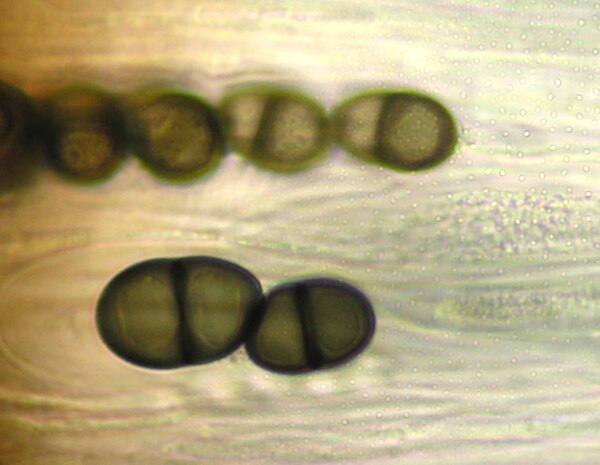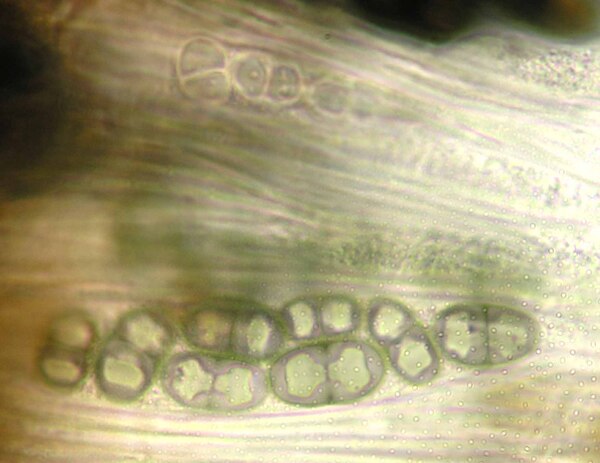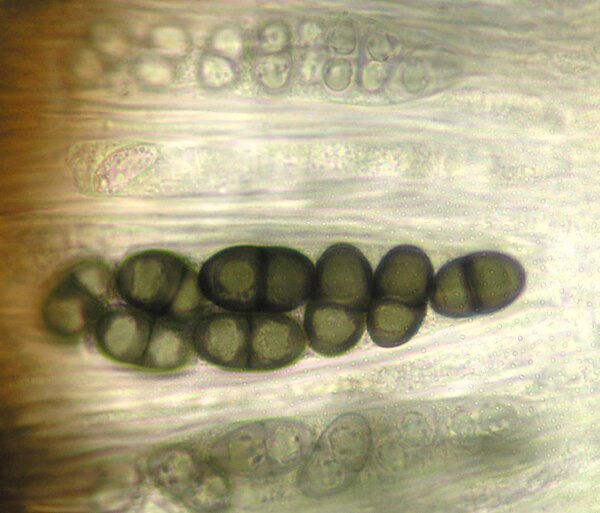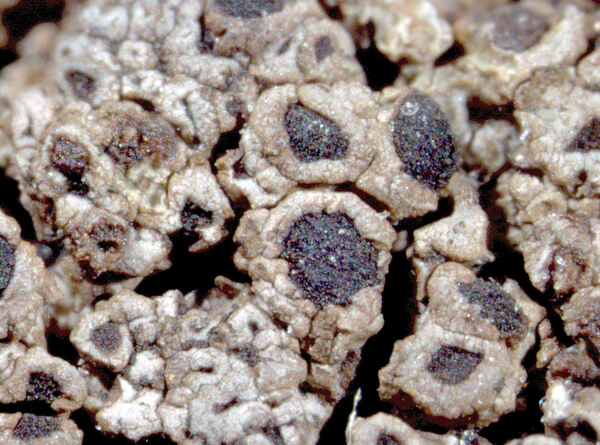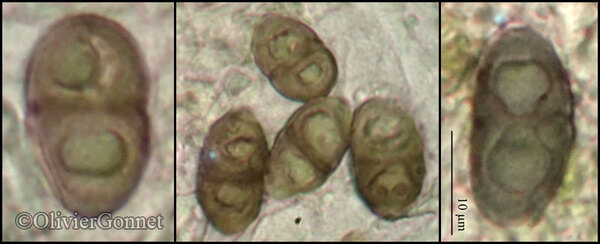Rinodina milvina (Wahlenb.) Th. Fr.
N. Acta Reg. Soc. Sci. Upsal., ser. 3, 3: 224, 1861. Basionym: Parmelia milvina Wahlenb. in Ach. - Meth. Lich. Suppl.: 34, 1803.
Synonyms: Lecanora milvina (Wahlenb.) Ach.; Lecanora sophodes var. scopulina Nyl.; Lecanora sophodes var. submilvina Nyl.; Lecanora subconfragosa Nyl.; Rinodina milvina var. karelica Räsänen; Rinodina milvina var. scopulina (Nyl.) H. Olivier; Rinodina sophodes f. saxicola Kernst.; Rinodina sophodes var. scopulina (Nyl.) Croz.; Rinodina subconfragosa (Nyl.) Flagey
Description: Thallus crustose, episubstratic, rimose-areolate, often delimited by a black prothallus, the areoles up to 0.5-1 mm wide, smooth to rugose, dark grey, reddish brown or dark brown, dull. Medulla white, I-. Apothecia lecanorine, adnate to subsessile, contiguous, sometimes angular by mutual compression, 0.3-1(-1.5) mm across, with a dark brown to black, concave to flat, rarely slightly convex disc and a thick, smooth to crenulate, persistent thalline margin. Thalline exciple 60-100 µm wide laterally, corticate, without crystals; proper exciple colourless, 5-20 µm wide laterally, expanding to 10-40 µm in upper part; epithecium reddish brown, K-; hymenium colourless, (65-)100-120 µm high; paraphyses not strongly coherent, 1.5-2.5 µm thick at mid-level, the apical cells 3.5-5.5 µm wide, immersed in dispersed pigment; hypothecium colourless. Asci 8-spored, clavate, the K/I+ blue tholus penetrated by a faintly amyloid apical cushion with parallel or diverging flanks, the wall K/I-, surrounded by a K/I+ blue outer layer, Lecanora-type. Ascospores 1-septate, often constricted at septum, brown, broadly ellipsoid, (13-)16-19(-23) x (7-)9-11(-13) µm, Milvina-type, often grading into Pachysporaria-type at maturity, with a well-developed torus, the walls finely warted, the ontogeny of type A (apical wall thickening after septum formation). Pycnidia dark, immersed. Conidia bacilliform, 4-5 x 1-1.5 µm. Photobiont chlorococcoid. Spot tests: K-, C-, KC-, P-, UV-. Chemistry: without lichen substances.
Growth form: Crustose
Substrata: rocks
Photobiont: green algae other than Trentepohlia
Reproductive strategy: mainly sexual
paras crustose lichens when young
Commonnes-rarity: (info)
Alpine belt: common
Subalpine belt: very common
Montane belt: rather rare
Dry submediterranean belt: absent
Humid submediterranean belt: absent
Padanian area: absent
pH of the substrata:
1 2 3 4 5
Solar irradiation:
1 2 3 4 5
Aridity:
1 2 3 4 5
Eutrophication:
1 2 3 4 5
Poleotolerance:
0 1 2 3
Altitudinal distribution:
1 2 3 4 5 6
Rarity
absent
extremely rare
very rare
rare
rather rare
rather common
common
very common
extremely common
Loading data...
Occurrence data
Predictive map
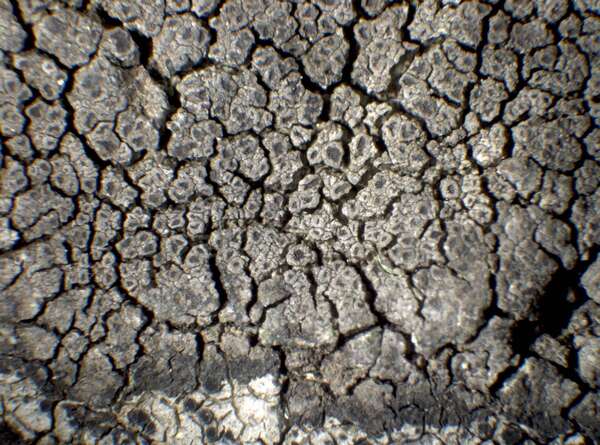
P.L. Nimis; Owner: Department of Life Sciences, University of Trieste
Herbarium: TSB (34912)
2002/02/21
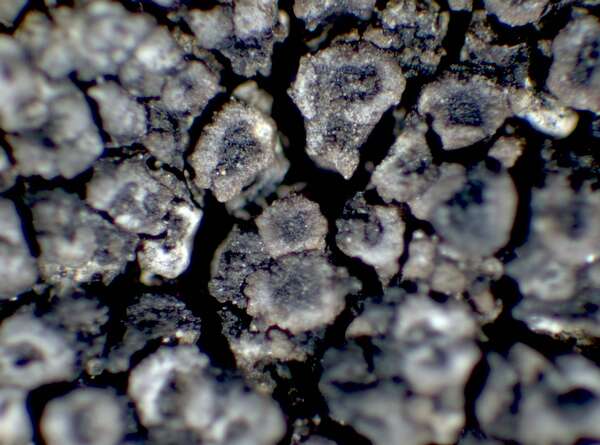
P.L. Nimis; Owner: Department of Life Sciences, University of Trieste
Herbarium: TSB (20168)
2001/11/29
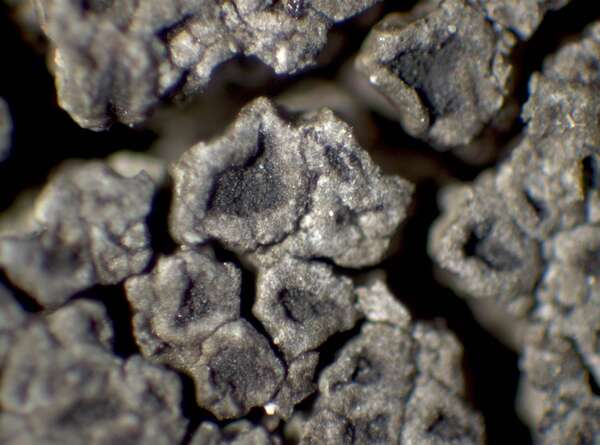
P.L. Nimis; Owner: Department of Life Sciences, University of Trieste
Herbarium: TSB (34912)
2002/02/21
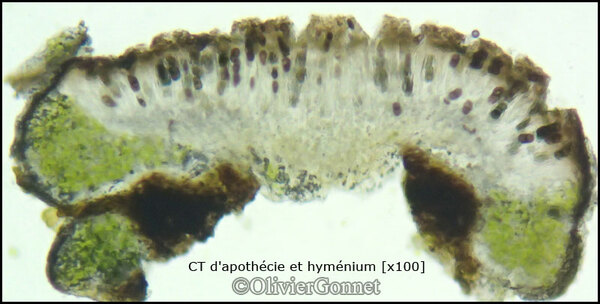
Courtesy Danièle et Olivier Gonnet - Source: https://www.afl-lichenologie.fr/Photos_AFL/Photos_AFL_R/Textes_R2/Rinodina_milvina.htm
France, 2/9/2014 - Bonneval-sur-Arc, Pont de L'Oulietta, alt. 2500 m - Savoie
Growth form: Crustose
Substrata: rocks
Photobiont: green algae other than Trentepohlia
Reproductive strategy: mainly sexual
paras crustose lichens when young
Commonnes-rarity: (info)
Alpine belt: common
Subalpine belt: very common
Montane belt: rather rare
Dry submediterranean belt: absent
Humid submediterranean belt: absent
Padanian area: absent
pH of the substrata:
| 1 | 2 | 3 | 4 | 5 |
Solar irradiation:
| 1 | 2 | 3 | 4 | 5 |
Aridity:
| 1 | 2 | 3 | 4 | 5 |
Eutrophication:
| 1 | 2 | 3 | 4 | 5 |
Poleotolerance:
| 0 | 1 | 2 | 3 |
Altitudinal distribution:
| 1 | 2 | 3 | 4 | 5 | 6 |
Rarity
absent
extremely rare
very rare
rare
rather rare
rather common
common
very common
extremely common
Loading data...
Occurrence data
Predictive map

P.L. Nimis; Owner: Department of Life Sciences, University of Trieste
Herbarium: TSB (34912)
2002/02/21

P.L. Nimis; Owner: Department of Life Sciences, University of Trieste
Herbarium: TSB (20168)
2001/11/29

P.L. Nimis; Owner: Department of Life Sciences, University of Trieste
Herbarium: TSB (34912)
2002/02/21



